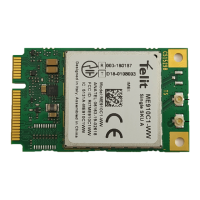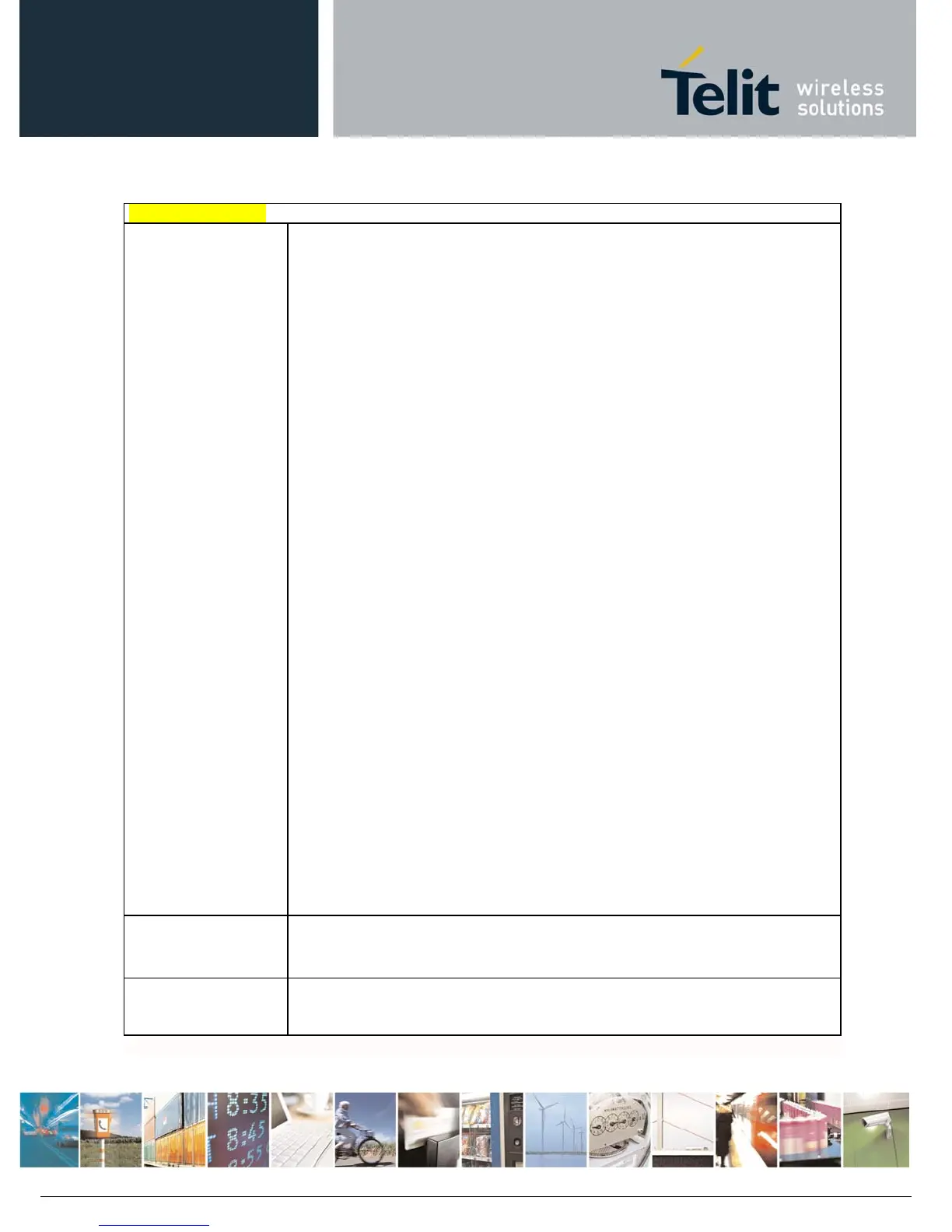AT Commands Reference Guide
80529ST10815A Rev.2– 2017-09-14
ReproductionforbiddenwithoutTelitCommunicationsS.p.A.writtenauthorization‐AllRightsReserved page140of233
#BND - Select Band
<UMTS band>:
0 - 1900 / 2100MHz(FDD I) (default value depending on product)
1 - 1900MHz(FDD II) (default value depending on product)
2 - 850MHz(FDD V)
3 - 2100MHz(FDD I) + 1900MHz(FDD II) + 850MHz(FDD V)
4 - 1900MHz(FDD II) + 850MHz(FDD V)
5 - 900MHz(FDD VIII)
6 - 2100MHz(FDD I) + 900MHz(FDD VIII)
7 – 1700/ 2100MHz(FDD IV, AWS)
<LTE band> values in the range 1 – 4294967295 as a sum of:
1 - B1
2 - B2
4 - B3
8 - B4
…
i - B(2exp(i-1))
…
2147483648 - B32
Note: not all products support all the values of parameter <band>: please refer to
test command to find the supported range of values.
Note: not all products support all the values of parameter <UMTS band>: please
refer to test command to find the supported range of values.
Note: not all products support all the values of parameter <LTE band>: please
refer to test command to find the supported range of values (maximum value is the
sum representation of supported bands).
Note: for 4G only product use fixed unused value 0 for <band> and <UMTS
band>
parameters.
Note: for 4G/3G only product use fixed unused value 0 for <band> parameter.
Note: for 4G/2G only product use fixed unused value 0 for <UMTS band>
parameter.
AT#BND?
Read command returns the current selected band in the format:
#BND: <band>,<UMTS band>,<LTE band>
AT#BND=?
Test command returns the supported range of values of parameters <band>,
<UMTS band>
and <LTE band>.

